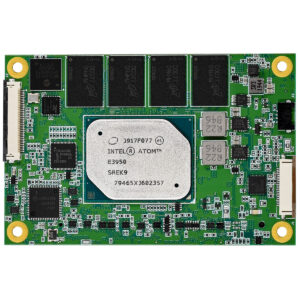
If you’re a regular reader of this blog, you know that we have covered many board specifications, form factors, standards, and so on. For the general embedded computing market, we’ve covered just about all the mainstream standards. The tip of the iceberg reveals such standards as EPX, EPIC, 3.5-in., PC104, and multiple variations of ITX.
When determining what’s best for your application, it’s important to remember that the single-board computer (SBC) standards cover more than the size of the board. That aspect is important and sometimes is the final determining factor as it is often dictated by the end application. But other things get rolled into that decision (and the associated specification) beyond just the size, including the type and availability of I/O and the number of connectors.
But is it even necessary to adhere to a standard when embedded SBC vendors are willing to produce something that’s custom? Designing something custom might be the right option for you. Let’s go through the reasons for and against standards-based designs.
Why Standard Is Best
First, standards don’t lock you into a particular vendor when sourcing your products, including peripherals and software. Standards also greatly simplify the upgrade process. In most cases, you can acquire a higher-performing module and plug it into the system and just make some software modifications. Just be sure that the product you’re choosing adheres to the spec and isn’t “specification-compatible” or some other variant which means the board might need more than slight modifications to work properly.
The lifecycles of embedded systems can be quite long, sometimes more than a decade, so an upgrade strategy is important, right from the inception of the design.
The decision to go custom versus standard involves a host of factors. That would include expected volume, up-front development costs, production costs, product life cycle, reliability, and security requirements. A custom board design will deliver exactly the feature set you need, and nothing on the board that you don’t need (and don’t have to pay for).
In most cases, the decision to go custom comes about because the required feature set just isn’t readily available on a standard product. That could come from the need for such things as extra analog I/O, motor controllers, relays, non-traditional interfaces (like fiber or cellular), GPS, or custom ICs, like FPGAs or GPUs.
The difficulties of doing custom designs means that you may have to do your own board layout, routing, etc. That’s not for the weak of heart (or an inexperienced designer).
A Hybrid Approach Could Work
Remember that it doesn’t always have to be one or the other. Some combination of both standard and custom can be handled as well, also known as semi-custom. This route can be a time and money-saver, reducing the amount of required NRE. And it will likely result in exactly (or very close to) the functionality and form factor that’s desired.
That said, the probability that a COTS (Commercial Off-the-Shelf) approach will work for you is quite high. The various standards were developed to accommodate most embedded applications, and they make sense from the cost and time-to-market perspectives. A Computer-on-Module (COM) is a good example of a standard form factor that had an eye on upgradability when the specification was being developed.
Enter the COM
A COM is a type of SBC, one that offers lots of functionality, but still needs to be plugged into a carrier baseboard, where the I/O is brought out externally. In most cases, the COM is centered around a particular microprocessor (or multiple processors) and includes memory and some limited I/O and their associated controllers. The remaining functionality comes from the carrier into which the COM is plugged.

One great example of a standard COM is the WINSYSTEMS COMeT10-3900 industrial COM Express Type 10 Mini module. This SBC is designed around an Intel Atom E3900 microprocessor, meaning that developers are familiar with the processor architecture, thereby easing the software integration.
While the low-power COMeT10-3900 is packed with features, it would be plugged into a carrier for external connections. Its feature set includes up to 8 GB of LPDDR4 system memory, full HD and 3D graphics acceleration, onboard discrete TPM 2.0 hardware security, and the ability to operate in a wide temperature range, from -40ºC to +85ºC.
The bottom line is that most applications can be filled with a standard product. But if custom is needed, we suggest you find a partner with extensive design experience, like the team at WINSYSTEMS.
